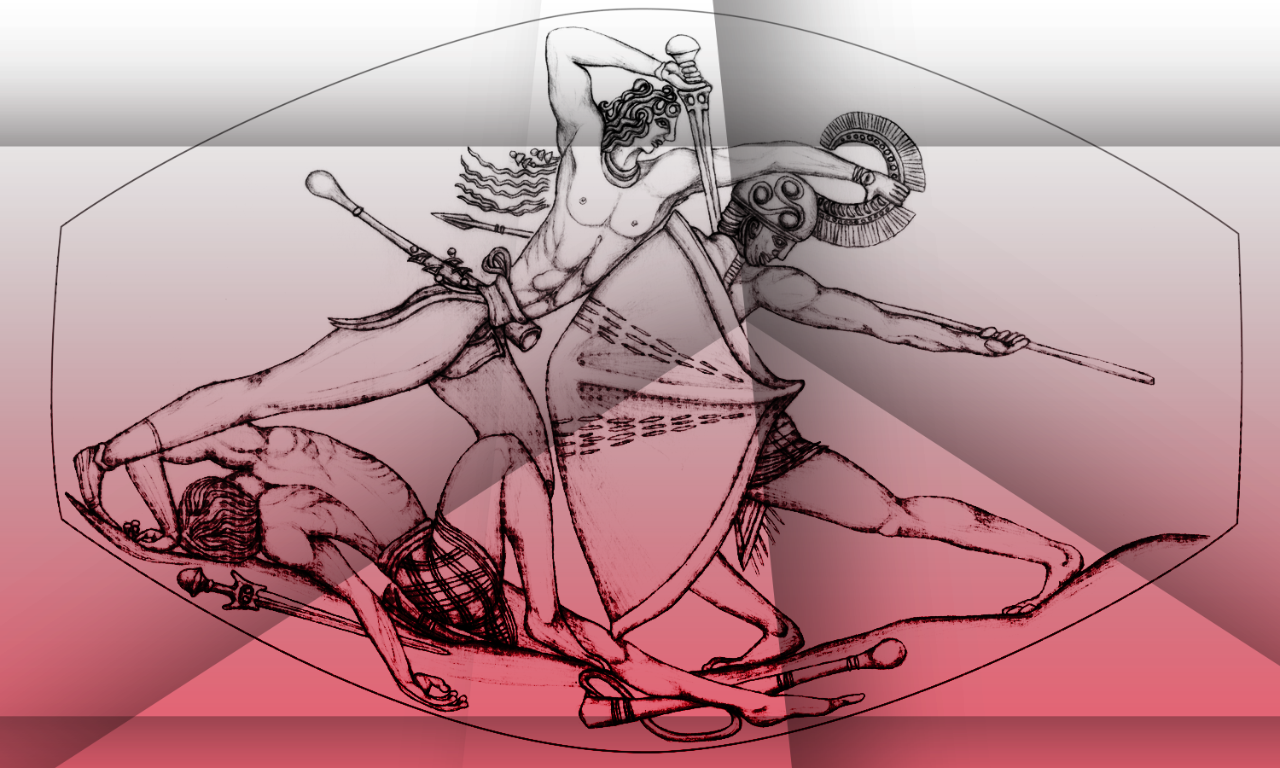An enlarged drawing of the stunningly detailed combat scene captured on an agate sealstone discovered by the University of Cincinnati's Sharon Stocker and Jack Davis. Tina Ross/Courtesy Department of Classics, University of Cincinnati. Color illustration/Ben Gardner, UC Creative Services
New PBS-BBC series ‘Civilizations’ spotlights Griffin Warrior sealstone artifact in season premiere
The Pylos Combat Agate, a rare Minoan sealstone discovered by University of Cincinnati researchers in the treasure-laden tomb of a Bronze Age Greek warrior, is among history’s most spectacular artifacts featured in the season premiere of the new PBS-BBC series “Civilizations.
When University of Cincinnati archaeologists last fall unveiled the Pylos Combat Agate, an intricately carved Minoan sealstone unearthed in the 3,500-year-old tomb of a Bronze Age warrior in southwest Greece, the miniature masterpiece captivated audiences worldwide.
Now PBS and the BBC will offer a high-definition look at what experts have hailed as one of the finest works of prehistoric Greek art ever discovered in the premiere of “Civilizations,” a sweeping nine-part series that tells the story of art from the dawn of human history to the present day.
Hosted by English historian Simon Schama, the season’s premiere, titled “Second Moment of Creation,” explores the formative role of art and creative imagination in the forging of humanity.
The episode aired in the U.K. March 1 on BBC Two and is set to air April 17 in the U.S. on PBS.
Shari Stocker, a senior research associate in UC's Department of Classics, and Jack Davis, the university's Carl W. Blegen chair in Greek archaeology and department head, spearheaded the 2015 excavation that uncovered the treasure-laden Bronze Age warrior’s tomb dating back to about 1500 B.C. in the Pylos region of Greece.
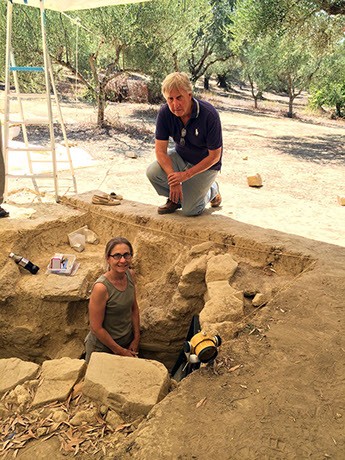
UC researchers Shari Stocker and Jack Davis at the tomb of the Griffin Warrior in southwest Greece.
The husband-and-wife team dubbed the remarkably intact skeleton the “Griffin Warrior” for the discovery of an ivory plaque depicting a griffin buried alongside him.
Stocker and Davis met with BBC film crews last summer at the excavation site near the Palace of Nestor in Greece. The plan was originally to film the tomb and ongoing archaeological work, with a focus on four gold signet rings and a gold necklace discovered in the grave.
But Stocker and Davis had a surprise for film producers: a first look at a Minoan sealstone they believed would prompt no less than a reconsideration of the evolution and development of Greek art itself.
“The producer responded back in five seconds,” said Davis with a laugh.
A clip from the season premiere of 'Civilizations' featuring the Pylos Combate Agate discovered by UC researchers in southwest Greece. The full segment features interviews with UC archaeologists Shari Stocker and Jack Davis filmed at the site of the Griffin Warrior's tomb excavation near the Palace of Nestor.
Although unearthed in 2015, it had taken conservation experts more than a year to clean the limestone-encrusted seal and even longer to reveal the tiny gem’s hidden details. But as the intricate scene began to emerge, the team was shocked to discover they had unveiled no less than a masterpiece.
The meticulously carved sealstone features a fierce hand-to-hand combat scene painstakingly — and remarkably, for its small size — etched on a piece of hard stone measuring just 3.6 centimeters, or just over 1.4 inches. Some of the details, such as the highly stylized weaponry and facial expressions, can only be seen with the assistance of photomicroscopy.
“[The Pylos Combat Agate] forces us to rethink everything we thought we knew about this moment in history.”
‒ Simon Schama
Though researchers are hesitant to draw a direct connection to Homeric legends, Stocker and Davis are confident that the seal would have been representative of the Griffin Warrior’s role in Mycenaean society.
In a clip posted on the “Civilizations” website, host Schama marvels at the ancient artist’s sophisticated technique and keen eye for details.
“Somebody out there with incredible hawklike eyesight is drawing on a body of combat literature that goes all the way down to those beautiful Homeric inventions that sets something running in European culture…,” he raves. “It’s 3-D, folks. It’s coming at you.”
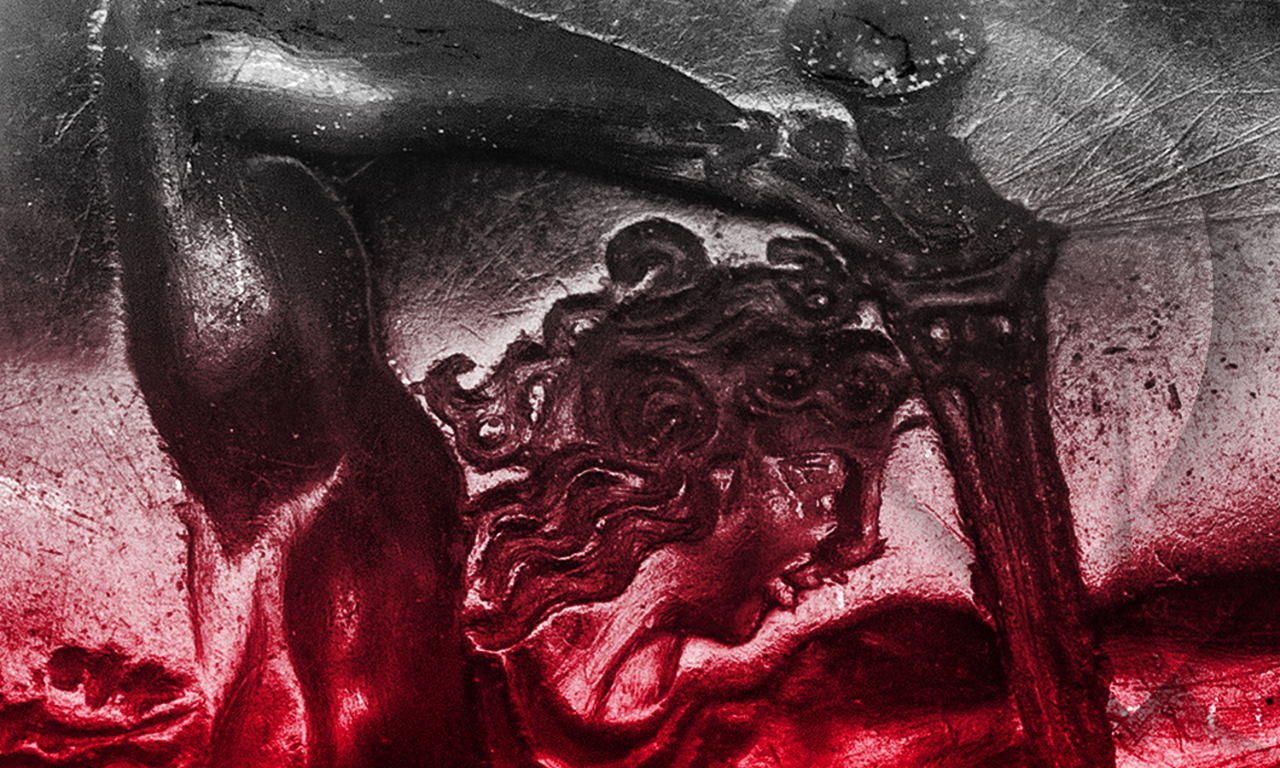
The seal artist's attention to detail and use of stylized faces make the Pylos Combat Agate one of the finest works of prehistoric Greek art ever discovered. Courtesy of The Department of Classics, University of Cincinnati
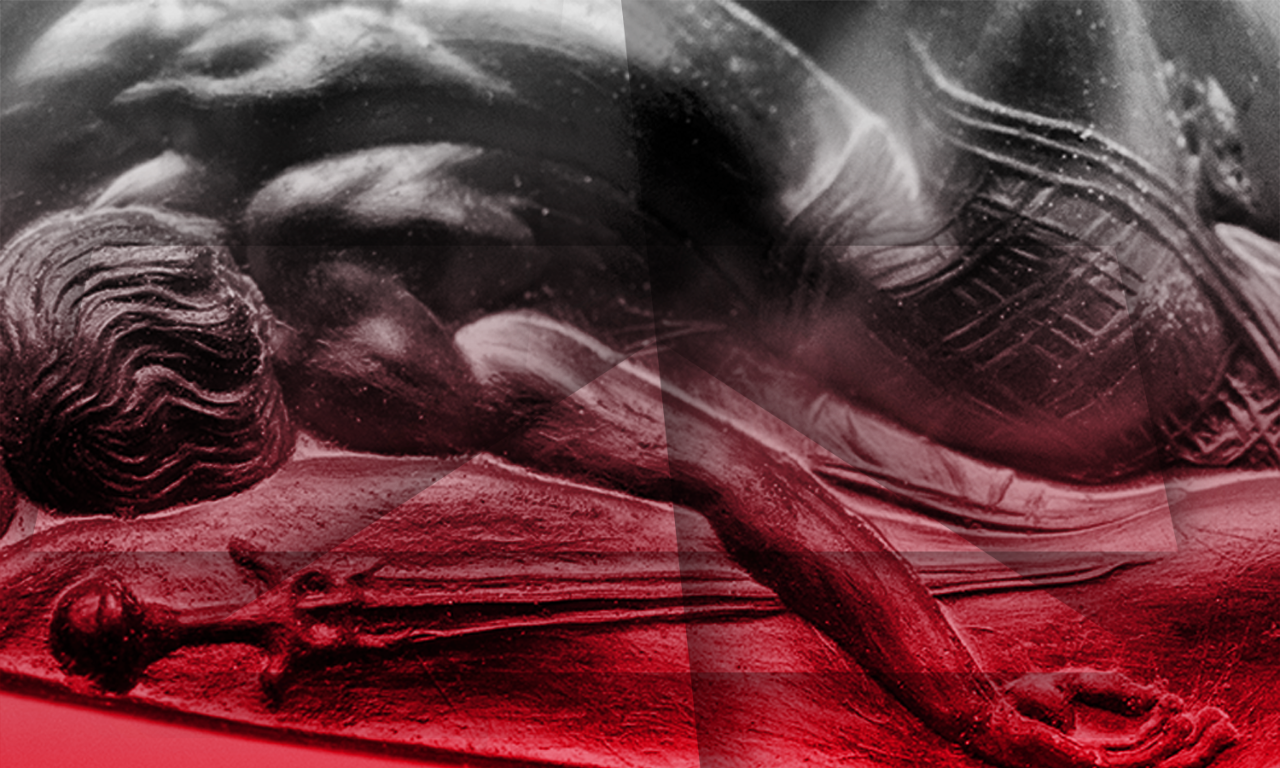
Many of the seal’s details, such as the intricate weaponry ornamentation, become clear only when viewed via photomicroscopy. Courtesy of The Department of Classics, University of Cincinnati
Davis and Stocker say the Pylos Combat Agate’s craftsmanship and exquisite detail make it the finest discovered work of glyptic art produced in the Aegean Bronze Age.
Experts agree that the seal promises not only to rewrite the history of ancient Greek art, but to help shed light on myth and legend in an era of Western civilization still steeped in mystery.
Host Schama, an art history and history professor at Columbia University and award-winning author and documentary filmmaker, concurs. “It forces us to rethink everything we thought we knew about this moment in history,” he says in the clip.
“Civilizations” is already earning positive reviews from critics in the U.K.
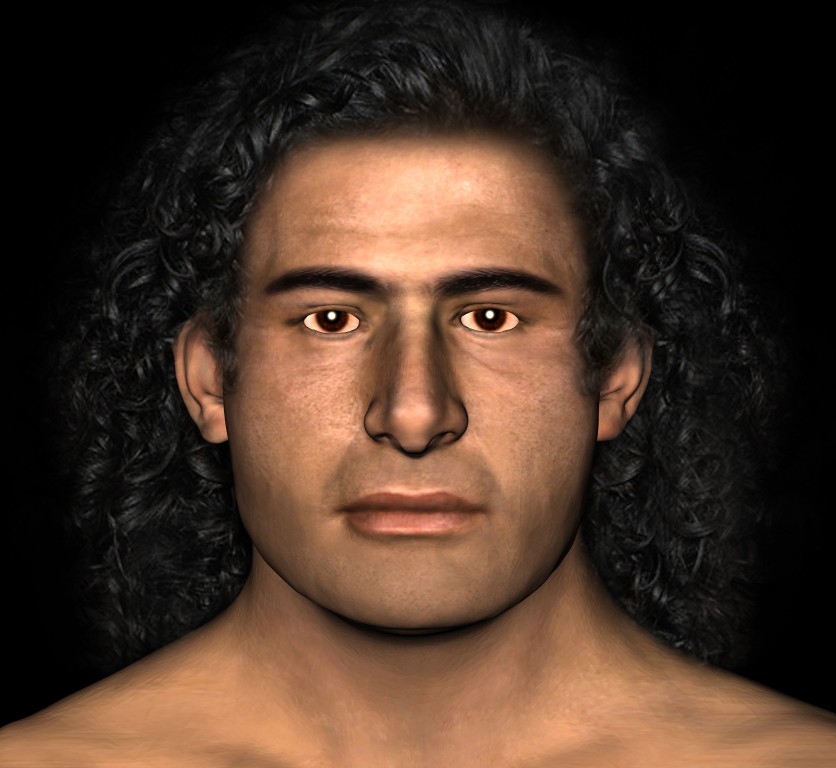
A specialized team reconstructed the face of the Griffin Warrior by layering facial tissue over his skull.
In its review, The Telegraph noted the series’ “superb” visuals, specifically spotlighting its segment on the Pylos Combat Agate seal.
“The high-definition images of a tiny yet breathtakingly vivid Minoan carving of armed combat from 1450 B.C. — unearthed just three years ago — were as jaw-dropping as anything on [the 2017 British documentary] ‘Blue Planet II,’” writes journalist Gerard O’Donovan.
Davis and Stocker revealed the Pylos Combat Agate to the world last fall and published their findings in the October-December edition of the journal Hesperia. The UC researchers say they appreciate the opportunity to share news of the team’s remarkable discovery to even larger audiences worldwide.
“We were thrilled to participate in the new BBC/PBS series, ‘Civilizations,’” said Stocker. “It is a wonderful opportunity to spread the word about the University of Cincinnati’s new excavations at the Palace of Nestor.”
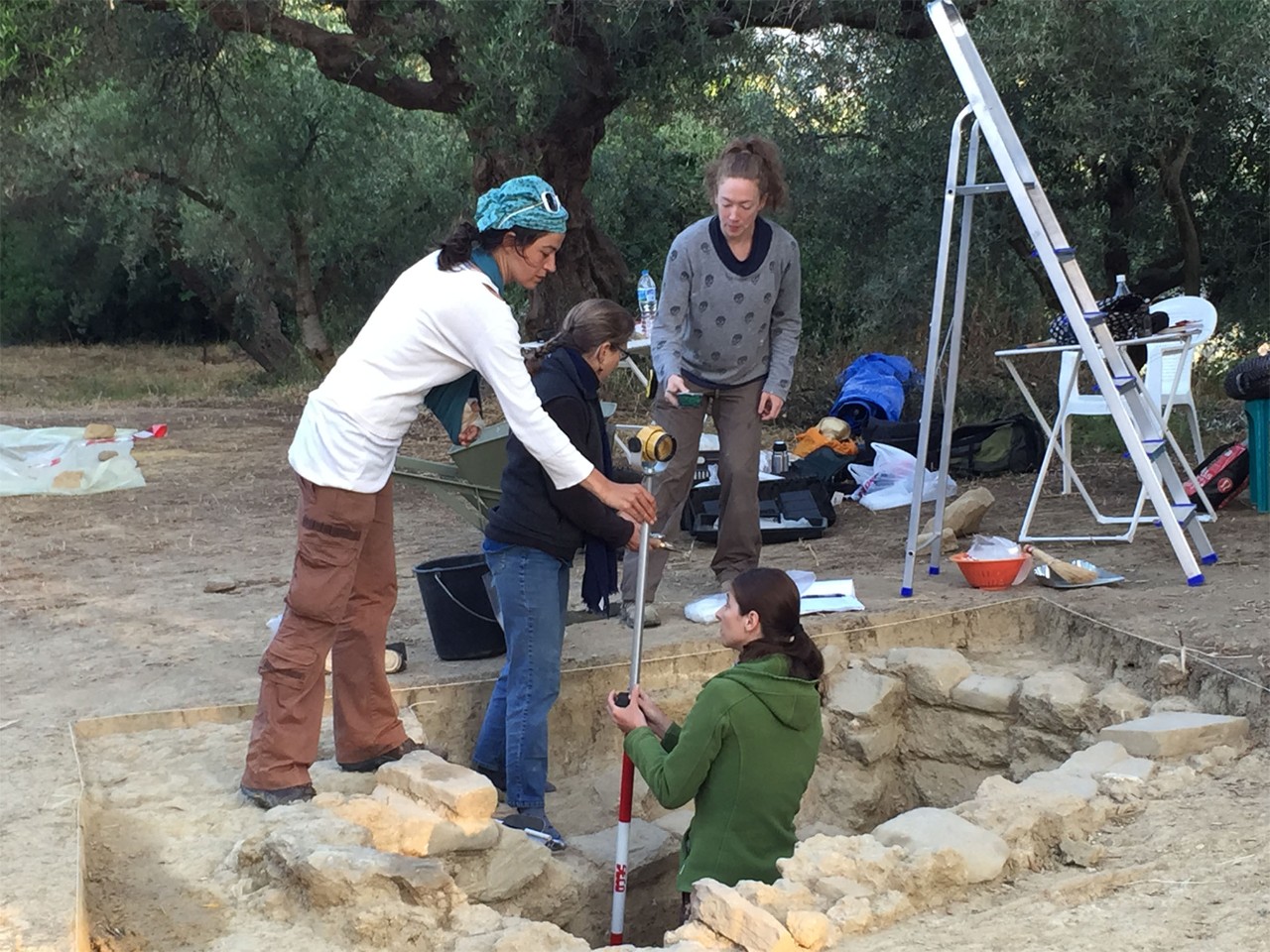
The UC team at work excavating the Griffin Warrior's tomb. From left are Denitsa Nenova, University College London; UC's Sharon Stocker; Alison Fields, UC graduate student in classics; and in the trench is Jonida Martini, a UC graduate who earned her M.A. in classics.
About the “Griffin Warrior”
In the spring of 2015, an archaeological team led by Shari Stocker, a senior research associate in UC's Department of Classics, and Jack Davis, the university's Carl W. Blegen Professor of Greek Archaeology and department head, made a rare discovery in the Pylos region of Greece of an intact, Bronze Age warrior’s tomb dating back to about 1450 B.C.
The “Griffin Warrior” tomb was named the “most important [find] to have been discovered [in continental Greece] in 65 years” by the Greek Culture Ministry. The 3,500-year-old tomb had more than 3,000 objects on or around the warrior’s body, including treasures and weapons.
For more information about the “Griffin Warrior,” visit www.griffinwarrior.org
Learn more about the discovery
Read more about the Griffin Warrior tomb at UC Magazine:
UC team discovers rare warrior tomb filled with Bronze Age wealth and weapons
Lord of the rings: UC team’s discovery prompts new consideration of Greek history
The impact of the latest discoveries has also been noted by global media coverage, including news written in Greek, Russian and Arabic. A few of the more prominent mentions include:
- The New York Times - A Grecian Artifact Evokes Takes From the 'Iliad' and 'Odyssey'
The New York Times - Grave of ‘Griffin Warrior’ at Pylos Could Be a Gateway to Civilizations
The New York Times - In Greek Warrior’s Grave, Rings of Power (and a Mirror and Combs)
Smithsonian magazine - The Incredible Treasures Found Inside the 'Griffin Warrior' Tomb
National Geographic - Rare Unlooted Grave of Wealthy Warrior Uncovered in Greece
For a more complete list of publications, visit griffinwarrior.org/griffinwarrior-publicity.html
About UC's Department of Classics
For 75 years, the Department of Classics of the University of Cincinnati McMicken College of Arts and Sciences has organized and supported archaeological research projects in the Mediterranean. This commitment to sustained research is paralleled by few other academic institutions in the United States. A consistent program of excavations and surveys has built the department's well-deserved reputation as one of the world’s preeminent centers of graduate education in pre-Classical and Classical archaeology.
Become a Bearcat
Learn more about UC's undergraduate and graduate programs in the Department of Classics or explore other degrees and programs. Tour the campus and apply today.

